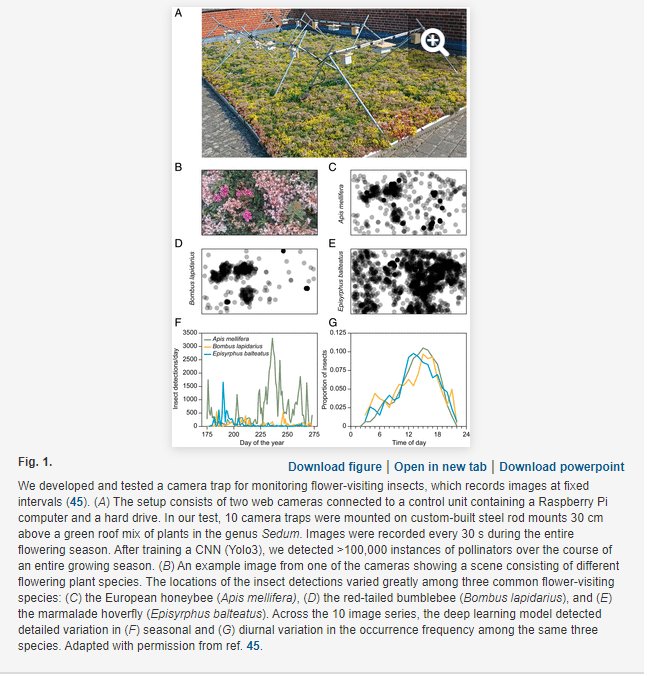Deep learning and computer vision will transform entomology
New publication by Toke T. Høye, Johanna Ärje, Kim Bjerge, Oskar L. P. Hansen et al.

Abstract:
Most animal species on Earth are insects, and recent reports suggest that their abundance is in drastic decline. Although these reports come from a wide range of insect taxa and regions, the evidence to assess the extent of the phenomenon is sparse. Insect populations are challenging to study, and most monitoring methods are labor intensive and inefficient. Advances in computer vision and deep learning provide potential new solutions to this global challenge. Cameras and other sensors can effectively, continuously, and noninvasively perform entomological observations throughout diurnal and seasonal cycles. The physical appearance of specimens can also be captured by automated imaging in the laboratory. When trained on these data, deep learning models can provide estimates of insect abundance, biomass, and diversity. Further, deep learning models can quantify variation in phenotypic traits, behavior, and interactions. Here, we connect recent developments in deep learning and computer vision to the urgent demand for more cost-efficient monitoring of insects and other invertebrates. We present examples of sensor-based monitoring of insects. We show how deep learning tools can be applied to exceptionally large datasets to derive ecological information and discuss the challenges that lie ahead for the implementation of such solutions in entomology. We identify four focal areas, which will facilitate this transformation: 1) validation of image-based taxonomic identification; 2) generation of sufficient training data; 3) development of public, curated reference databases; and 4) solutions to integrate deep learning and molecular tools.
